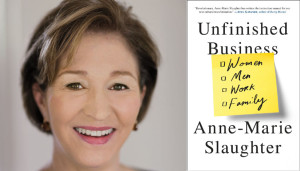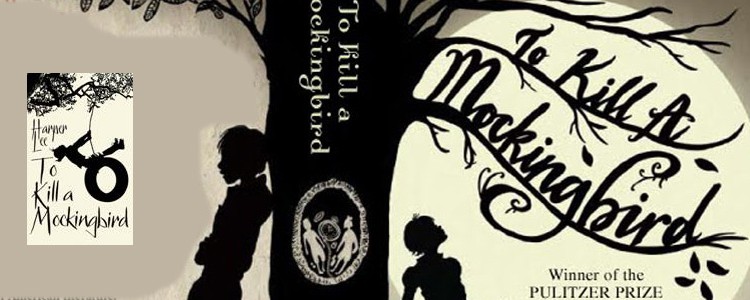( While reading ManBooker shortlisted novel, Neel Mukherjee’s The Lives of Others, I began to discuss it with Hansda Sowvendra Shekhar. He is an avid reader. Initially he was happy with the novel, it was well written, but then there was this long silence from him. A few days ago, I got a message from him at 2am to say he was not very comfortable at the portrayal of Santhals in the book. He should know. It is his community. So I asked him to contribute a guest post for my blog. I am posting it as he sent it. )

When I first saw the Indian hardcover edition of Neel Mukherjee’s second novel, The Lives of Others, at a book store in Kolkata in June 2014, I was struck by the familiarity of the contents of the book. Having grown up and lived all my life in a southern corner of the state of Jharkhand, the complexities of a Bengali joint family and the Naxalite movement were familiar issues. However, what was even more familiar – and striking – was the map at the beginning of the novel; for inset in that map were all the places that remind me of home. They are not big or famous places. They are small, district towns and villages. They do not find a regular mention in the media like bigger cities like Kolkata or Delhi do. An incident that takes place in these places has to be very big, remarkable in every way to have people talk about these places. Even if these places find a mention in the front pages of The Telegraph or The Statesman, I am quite sure that many readers won’t remember their names just a mere 24 hours after having read about them. Yet, these are the places whose names I have been hearing ever since I developed the ability to listen to and understand words and names; maybe, since when I was 2 or 3 years old. I am 31 now, and the names of these places fill me with a desire to just run back to my ancestral village or my hometown at the first given opportunity.
I can vouch for the actuality of three places in that inset: Belpahari, Binpur, and Jhargram. I am not too sure of Gidighati and Majgeria. Perhaps, they, too, are real. Perhaps, they are a creation of the author’s imagination. But Belpahari, Binpur and Jhargram are real. They exist. There is another place mentioned a number of times in the novel, giving that place a certain importance, although it does not appear in the map: Gidhni.
The name of my village is Kishoripur. It is the village of my ancestors; the place where my father, grandfather, and all those who came before were born and raised. Kishoripur is a village in Chakulia block of East Singbhum district of Jharkhand, a mere 10 km from the border with West Bengal. Both Gidhni and Belpahari are some 10-15 km from Kishoripur, in two different directions—Gidhni, towards the east; Belpahari, towards the north. Jhargram is some 30-35 km from Kishoripur, towards the east. Binpur is some 20-25 km from Kishoripur, towards the north-east. I remember a saying I have grown up with. Choluk gaadi Belpahari—Let the vehicle go to Belpahari. This is a cry of excitement that village people, who, in earlier times, didn’t usually get to see a car or bus or other automobile, used to make when they boarded a gaadi. The poetry in this simple cry of excitement cannot be missed. Gaadi and Belpahari rhyme with one another. Somewhere in the book, Ghatshila has been mentioned. Ghatshila, the place famous for its copper factory, and for being a favourite weekend getaway among the Bengalis from Kolkata, is the place where my parents used to work and where I have grown up. Ghatshila is my hometown. Belpahari, Binpur, and Jhargram were the reasons that drew me – and, ultimately, made me read – The Lives of Others; while Gidhni and Ghatshila filled me with a feeling of pride that the places I am so familiar with – one of those being my hometown, no less – are being read about by people all over the world.
As I progressed with the novel and the ups and downs in the Ghoshes’ lives, I came across many other familiar places, like, Bali, Nalhati, and Memari. I am working with the government of Jharkhand and am posted in Pakur. Pakur is a district in the Santhal Pargana division of Jharkhand. When I came to join my job in Pakur, I had no idea about the route. So my father accompanied me and we came from Ghatshila to Pakur by road. We passed through four districts in West Bengal – Pashchim Medinipur (western Medinipur, mentioned in the book), Bankura, Bardhaman, and Birbhum – before we entered Jharkhand again and reached Pakur. Nalhati and Memari were two places we passed through. Now, I travel from Ghatshila to Pakur by train. I first travel from Ghatshila to Howrah, from where I catch the train to Pakur. Bali and Nalhati are two stations I pass through. The familiarity provided by these places further drew me into The Lives of Others. I wasn’t reading the book because I wanted to know what happened with the Ghoshes. I was reading The Lives of Others because it was so familiar, because it told me things I knew, because I hoped to find another familiar point in one of its pages, because it seemed to speak to me.
I wasn’t disappointed. The book threw up the names of other familiar places. Jamshedpur, Giridih, Latehar, Chhipodohar, McCluskieganj. I had goose flesh as I read the names of these places and realised that many like me, all over the world, were reading these names.
Not only places, The Lives of Others was familiar also with regards certain terms that I have grown up with. For example, munish. Our family owns land in our village. When I was very little, my grandfather used to talk about letting the munish farm our fields. At that time, I understood that munish meant workers. Men who work in the fields. As I grew up, I learnt that munish meant the sharecroppers who worked our fields for us. This, exactly, is the meaning The Lives of Others gives for the word munish.
Then there were the familiar Bengali sayings. “fourteen forefathers”. When I read this term in Chapter 18, I, despite the sad and fearful context of this chapter, couldn’t help smiling. That is because I have heard people saying the original term: Choddo gushti—and also the comic implications of this term when it is said in anger. Another saying was: “a case of the sieve saying to the colander, “Why do you have so many holes in your arse?””, in Chapter 10. I know the Bengali of this one too, although that has the sieve with a needle. The sieve is riddled with holes, but it accuses the needle of having a hole!
The Lives of Others was, indeed, speaking to me. I don’t think I need to write about how meticulous this book is. I came to know of the politics in West Bengal, as well as about the processes involved in the manufacture of paper—this shows how good the research, the work on the background, has been. Finally, when the narrative reached the villages of West Medinipur, and Santhal characters entered the story, I found myself turning the pages in sheer delight. I wanted to read what had been written about Santhals, how they had been presented.
And this undid everything.
Maybe I had had too high expectations of The Lives of Others. Just because a book seemed so familiar, and was well-researched and well-written, I had felt that it would be entirely satisfactory. I was wrong. The description of the Santhals in The Lives of Others is anything but satisfactory. At the most, it is stereotypical, one dimensional, and whatever the author has written about Santhals has been drawn so heavily from whatever opinion the world, in general, holds about Santhals – about the Adivasis, in fact – that it all seems like a cliché.
First, there is this violent scene in Chapter 10—a moneylender called Senapati Nayek being hacked to death with tangi (an axe). The men who wielded the tangis were Dhiren, a young man from Kolkata who has turned to Naxalism, and Shankar Soren, a Santhal man from the village Majgeria. Senapati Nayek was hacked twice, and it has not been mentioned who hacked him, whether Dhiren or Shankar. It could be that each of them hacked him once. It could also be that either Dhiren or Shankar hacked him twice. In Dhiren’s case, it could be understood that he was driven by his Naxalite ideal to kill the landlord. He had something to prove. In Shankar’s case, he only had his poverty, and the fact that Senapati Nayek was cheating him out of what he produced on his land. The novel tells us that Senapati Nayek cheated Shankar Soren, that Shankar Soren sought revenge. The novel does not tell us what kind of person Shankar Soren was. He could have been a good man, but he could have also been a bad, a cruel man. For, the novel tells us that he beat his wife. He beat his wife, the novel informs us, out of frustration, but that could also mean that Shankar was depressed, that there was something going on in his mind. The novel further tells us that Shankar was drawn by Dhiren into the plot to kill Senapati. Shankar agrees to it. But, sadly, whatever the novel tells us about Shankar, it does not give us a detailed insight into his back story, it does not give Shankar a redeeming story. Shankar, here, represents the Santhals, and what we come to know about Santhals through the character of Shankar is that Santhals are naïve, helpless, frustrated, angry, yield easily to incitement, and violent—in this order. I don’t understand if this description of Santhals – through the character of Shankar – does any good to Santhals. Chances are that readers who are not familiar with Santhals might take Santhals to be fools who tend to lose whatever they own and repent for it, and then turn to violence to get their possessions back. Perhaps, Santhals might be seen as a bunch of psychos.
Second, there is this scene in Chapter 15, in which a drunk man called Ajit tells his friend Somnath: “…I find these tribal people really innocent and pure. Qualities we city-dwellers have lost.” Fine, this could be true. But let us consider the scene in its entirety. Ajit is drunk. How much weight do the proclamations of a drunk man hold? Next, there is one more friend, Shekhar, he too is drunk, who adds: “[The tribals] have no money, no jobs, no solid houses, yet look how happy they are. They sing, dance, laugh all the time, drink alcohol, all as if they didn’t have a single care in the world.” Now, isn’t this stereotyping? It has been taken for granted that tribals “have no money, no jobs, no solid houses”, and they “sing, dance, laugh all the time, drink alcohol”. Even if it is assumed that it is the voice of that particular character – and not the voice of the author who wrote this book – what positive thing do these lines hold for tribals? A reader who does not know tribals will assume that all tribals do are “sing, dance, laugh all the time, drink alcohol”.
Third, and this really irritated me. Chapter 15, just before that drunken discussion about tribals. Somnath, who is a complete lecher, is attracted to a young Santhal woman and goes to ask her the name of the flower she has put in her hair. The woman behaves coquettishly, and asks Somnath: “Babu, you give me money if I tell you the name of the flower?” At this point, I can’t help noticing, The Lives of Others turns into Satyajit Ray’s film adaptation of Sunil Gangopadhyay’s novel, Aranyer Din Ratri. The young Santhal woman could very well be Duli, the Santhal woman in the film Aranyer Din Ratri, played by Simi Garewal; while Somnath of The Lives of Others could be the city-bred Hari, played by Samit Bhanja in the film Aranyer Din Ratri. In fact, there is a scene in Aranyer Din Ratri, set in a small rural joint selling hooch, in which a drunk Duli comes to a drunk Hari and asks him to give her money to buy more hooch. “E babu, de na. Paisa de na”—Duli’s lines from the film are still clear in my mind, not because I liked those lines, but because, being a Santhal, I found those lines terribly embarrassing, and the character of Duli – played by Simi Garewal – absolutely unreal and a caricature. The same feeling of embarrassment came over me when I read about the Santhal woman in The Lives of Others asking for money from a city-bred man. Simi Garewal in Aranyer Din Ratri might have looked very glamorous to some people, but I cannot forgive Satyajit Ray for making a complete hash of a Santhal character. Similarly, I cannot forgive Neel Mukherjee for Aranyer Din Ratri-fication – or Simi Garewal-isation – of a Santhal woman in his novel.
Further, in the same chapter, Somnath has successfully seduced that Santhal woman, promising to buy her liquor, and was leading her towards the forest to, apparently, make out with her. This is what has been written in the novel: “He had heard that these promiscuous tribal women had insatiable desires; they were at it all the time, with whoever approached them”. Promiscuous? I wonder if the author was trying to count the qualities of tribal women or just generalizing things. If a woman drinks alcohol, does that make her promiscuous? Was it necessary to portray “tribal women” as “promiscuous” and with “insatiable desires”? This, together with lines like, “You think we didn’t see you unable to take your eyes off the ripe tits of these Santhal women?”, “Ufff, those tits! You’re absolutely correct, Somu, they’re exactly like ripe fruit. The only thing you want to do when you see them is pluck and shove into your mouth”, and “[Santhal women] fill every single sense. But not only tits, have you noticed their waists? The way they wind that cloth around themselves, it hardly covers anything, leaves nothing really to imagination. High-blood-pressure stuff” (all lines from Chapter 15) seem to only further the Simi Garewal-isation of Santhal women. Santhal women have been presented as objects of fantasy, what spoilt, city-bred men desire. While there might be some truth in men lusting after Santhal women, is it that difficult to accept Santhal women as real persons and not merely as objects lustful men fantasize about?
Finally, in Chapter 3, there is a mention of “the burial grounds of the Santhals”. I wonder, what burial grounds? I am a Santhal. I know that we Santhals do not bury our dead. We cremate them. So where did these “burial grounds of the Santhals” come from?
The “burial grounds of the Santhals” part did put me off a bit. But it was still quite early in the novel, and I was ready to overlook this error because I had started falling in love with this novel. I found one more error: “Gidhni Junction”, in Chapter 2. Gidhni is an actual place, and the railway station at Gidhni is not a junction. If one travels to Gidhni from Howrah, one would reach Jhargram first and then Gidhni. So why would “the railtrack [become] a loop-line” and why would “the train [leave] the main railway line and [go] over the cutting”? If one travelling from Howrah needed to get down at Jhargram, he could easily get down at Jhargram without needing to travel all the way to Gidhni. I overlooked “Gidhni Junction”, initially, thinking it to be a creative freedom the author took. The type of creative freedom that Jhumpa Lahiri took in The Namesake when she made the young Ashoke Ganguly travel from Howrah to Tatanagar in an overnight train instead of in one of the many trains that ran during the daytime so that the overnight train could have an accident near Dhalbhumgarh and Ashoke Ganguly’s life be changed forever. I tried overlooking both “Gidhni Junction” and “the burial grounds of the Santhals”. But what else was written about Santhals crushed all my hopes in such a way that The Lives of Others, a book I had found so familiar, stopped working for me.
I am happy that a novel which has a few Santhal characters is being received so well all over the world; but that is exactly what makes me afraid—that readers all over the world are reading about Santhals in The Lives of Others. Some readers might even believe in what The Lives of Others tells them about Santhals, and this does not make me happy at all, because the actual lives of the Santhals is somewhat different from what The Lives of Others tells us.
25 September 2014
Neel Mukherjee The Lives of Others Random House India, London, 2014. Hb. pp. 514 Rs. 399

HANSDA SOWVENDRA SHEKHAR is the author of the novel, The Mysterious Ailment of Rupi Baskey, published by Aleph Book Company. He is a Santhal, a native of Ghatsila subdivision of Jharkhand; and he is currently living in Pakur in the Santhal Pargana division of Jharkhand, where he is working as a medical officer with the government of Jharkhand. ( http://www.alephbookcompany.com/hansda-sowvendra-shekhar )
 Sheryl Sandberg and I agree on many things. We both encourage women to speak up and take their place at the table; we both want to see many structural changes in the workplace. To some extent the difference between us is largely a matter of which side of the equation to emphasize — a difference that, on my side, at least, is a function of relative age. I would have written a very similar book to Lean In at forty-three, Sandberg’s age when she published her book. My kids were very young and I had never met a work-life challenge that I could not surmount by working harder or hiring people to help out. By fifty-three, when I wrote my article, I found myself in a different place, one that gave me insight into the circumstances and choices facing the many women who have found that for whatever reason, leaning in simply isn’t an option.
Sheryl Sandberg and I agree on many things. We both encourage women to speak up and take their place at the table; we both want to see many structural changes in the workplace. To some extent the difference between us is largely a matter of which side of the equation to emphasize — a difference that, on my side, at least, is a function of relative age. I would have written a very similar book to Lean In at forty-three, Sandberg’s age when she published her book. My kids were very young and I had never met a work-life challenge that I could not surmount by working harder or hiring people to help out. By fifty-three, when I wrote my article, I found myself in a different place, one that gave me insight into the circumstances and choices facing the many women who have found that for whatever reason, leaning in simply isn’t an option. 
























